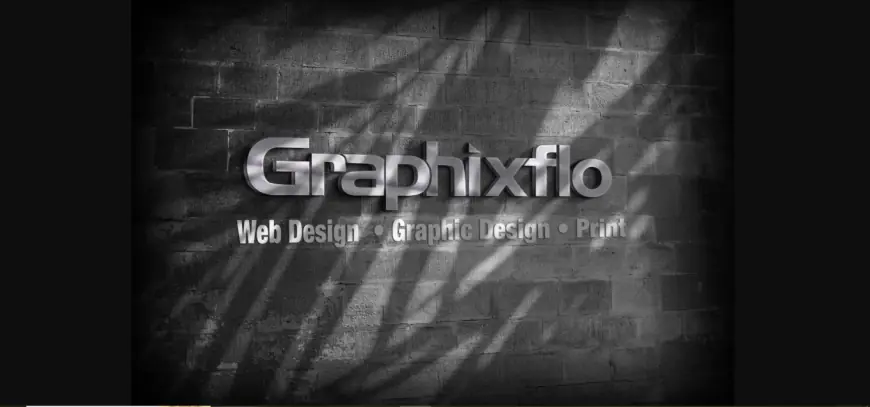The Art and Science of Web Design: A Comprehensive Guide
Hamilton Web Design Company with over 17 years in business GraphixFlo offers professional Web Design, Graphic Design, Print & SEO services. We are your #1 full-service Local Website Design and Graphic Design agency serving the Hamilton, Burlington, and Niagara region area.


In today’s digital-first world, web design plays a pivotal role in shaping online experiences. A well-designed website is not just about aesthetics; it’s a blend of functionality, usability, and visual appeal that communicates a brand’s identity while catering to user needs. This guide explores the key elements, principles, and trends of web design, offering insights for beginners and seasoned designers alike.
What is Web Design?
Web design encompasses the planning, conceptualization, and arrangement of content online. It involves creating websites and web applications that are not only visually appealing but also easy to navigate and interact with. Web design integrates various disciplines, including graphic design, user interface (UI) design, user experience (UX) design, and front-end development.
Key Elements of Web Design
1. Layout and Structure
The layout is the foundation of a website. A well-structured layout ensures content is organized, making it easier for users to find information. Common layouts include:
-
Grid Layouts: Use rows and columns to align elements neatly.
-
Asymmetrical Layouts: Add visual interest and uniqueness.
-
Single-Page Layouts: Streamline navigation by presenting all content on one page.
2. Typography
Typography sets the tone of a website. Choosing the right fonts, sizes, and spacing is essential for readability and brand alignment. Web-safe fonts like Arial, Roboto, and Open Sans are popular choices.
3. Color Scheme
Colors evoke emotions and reinforce brand identity. Designers often use color psychology to select palettes that resonate with the target audience. Tools like Adobe Color can help generate harmonious color schemes.
4. Imagery and Media
Images, videos, and animations add visual interest and communicate messages effectively. High-quality, optimized media enhances user engagement without slowing down the site.
5. Navigation
Intuitive navigation ensures users can find what they need effortlessly. Common navigation elements include menus, breadcrumbs, and search bars. Mobile-friendly navigation, such as hamburger menus, is crucial for responsive design.
6. Responsiveness
With the majority of web traffic coming from mobile devices, responsive design is non-negotiable. Websites must adapt seamlessly to various screen sizes and orientations.
Principles of Effective Web Design
1. User-Centric Design
The user’s needs and preferences should drive design decisions. Conducting user research and usability testing can help identify pain points and areas for improvement.
2. Simplicity
Less is more in web design. Avoid clutter by focusing on essential elements and whitespace. A clean design enhances readability and user experience.
3. Consistency
Consistency in fonts, colors, and layouts creates a cohesive experience. Design systems and style guides ensure uniformity across pages.
4. Accessibility
Inclusive design ensures that websites are usable by people with disabilities. Features like alt text for images, keyboard navigation, and proper contrast ratios improve accessibility.
5. Speed Optimization
Fast-loading websites reduce bounce rates and improve user satisfaction. Compressing images, minifying code, and using content delivery networks (CDNs) are common optimization techniques.
Web Design Tools and Technologies
1. Design Tools
-
Adobe XD: For prototyping and wireframing.
-
Figma: A collaborative design tool ideal for teams.
-
Sketch: Popular among Mac users for UI design.
2. Front-End Technologies
-
HTML: The backbone of web content.
-
CSS: For styling and layout.
-
JavaScript: Adds interactivity and dynamic elements.
3. Content Management Systems (CMS)
-
WordPress: User-friendly and versatile.
-
Wix: Great for beginners with drag-and-drop functionality.
-
Shopify: Ideal for e-commerce websites.
4. Frameworks and Libraries
-
Bootstrap: Simplifies responsive design.
-
Tailwind CSS: A utility-first CSS framework.
-
React: For building interactive UIs.
Emerging Trends in Web Design
1. Dark Mode
Dark mode reduces eye strain and conserves battery life on devices. It’s increasingly becoming a standard feature on modern websites.
2. Micro-Interactions
Small animations and interactions, like hover effects and loading indicators, enhance user engagement.
3. Minimalism
Minimalist designs with bold typography and ample whitespace create a modern, sleek look.
4. Voice User Interfaces (VUIs)
As voice search grows, integrating VUIs ensures accessibility for users who prefer voice commands.
5. AI and Chatbots
Artificial intelligence powers personalized experiences and chatbots that assist users in real-time.
Best Practices for Web Design
-
Plan Before Designing: Sketch wireframes and outline goals.
-
Test Across Devices: Ensure the website functions well on desktops, tablets, and smartphones.
-
Optimize for SEO: Use meta tags, alt attributes, and clean code to improve search engine rankings.
-
Prioritize Security: Use HTTPS, secure hosting, and regular updates to protect user data.
-
Gather Feedback: Conduct user testing to refine the design.
Conclusion
Web design is a dynamic field that combines creativity and technical skills. By focusing on user needs, embracing emerging trends, and adhering to best practices, designers can create websites that are not only visually stunning but also functional and accessible. Whether you’re a beginner or a seasoned professional, continuous learning and adaptation are key to staying ahead in this ever-evolving domain.
Read more: https://joripress.com/
What's Your Reaction?
 Like
0
Like
0
 Dislike
0
Dislike
0
 Love
0
Love
0
 Funny
0
Funny
0
 Angry
0
Angry
0
 Sad
0
Sad
0
 Wow
0
Wow
0




















































